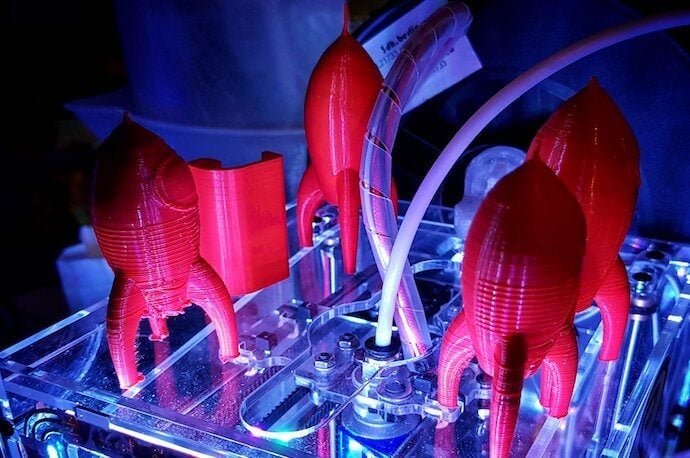The U.S. company Relativity Space made history on March 22, 2023, by launching the first almost entirely 3D-printed rocket into space. While its technology is somewhat more complex than the little plastic 3D printer sitting in your classroom or library, there are more similarities and potential than you may think.
What Relativity Space showed was that 3D printing is a viable way to make rockets. While the rocket did not complete its full mission, having some issues after it made it to space, it was an incredibly important step for this technology. The rocket did prove it could successfully survive points of the max stress.
Piece-by-piece
Many rockets have used 3D-printed parts before: In 2015, NASA made a prototype engine that was three-quarters 3D printed. U.S. aerospace company SpaceX has long used 3D-printed parts in their engines. New Zealand-based aerospace company Rocket Lab uses an almost entirely 3D-printed Rutherford engine on its rockets. A number of parts aboard the Space Launch System rocket used for NASA’s Artemis 1 mission were 3D printed.
The unique features that can be created by 3D printers have long been seen by the aerospace industry as a tool for making small numbers of complicated parts. However, Relativity Space’s use of 3D printing in its rockets is next level. Eighty-five percent of Relativity’s 110-foot tall Terran 1 rocket, which launched in March, was 3D printed. That included its 9 Aeon 1 engines. The company’s goal is to get its future rockets up to 95% 3D printed.
Supersizing
One of the main keys to making all of this happen is Relativity Space’s Stargate printer. According to the company, it is “the world’s largest metal 3D printer with AI-driven controls.” The 4th generation version of the printer, which came online last year, can make metal parts that are 120 feet long and 24 feet wide. That is quite a bit bigger than what the standard home or classroom 3D printer can do.
Relativity Space even developed its own varieties of metal that served the unique requirements for printing and launching a rocket. The company says it is capable of “printing a rocket with 100 times fewer parts in a matter of months.”
3D printing helps to reduce the number of parts required because engineers and designers can combine parts into larger pieces. Fewer parts mean fewer things that can fail, so Relativity Space is banking on its rockets being a more reliable option to send things into orbit.
Going even bigger!
The long-term goal for Relativity Space is to help humanity on its quest to establish a base on Mars. The company announced in April that it is now working on the Terran R, which will be more than twice the height (270 feet) of Terran 1. The R stands for “reusability,” because the plan is to make a 3D-printed rocket that could be reflown 20 times. While it will not get us to Mars just yet, it will be another step towards bringing 3D printing to our neighboring planet. Relativity Space is targeting 2026 for its first launch of Terran R.

